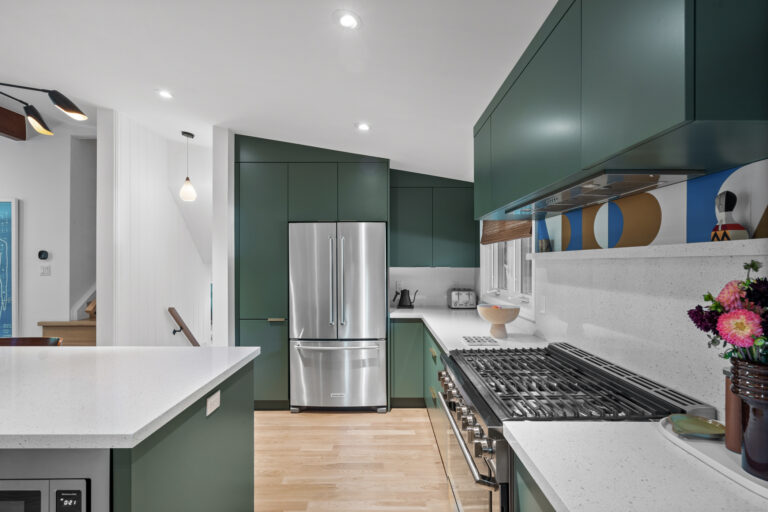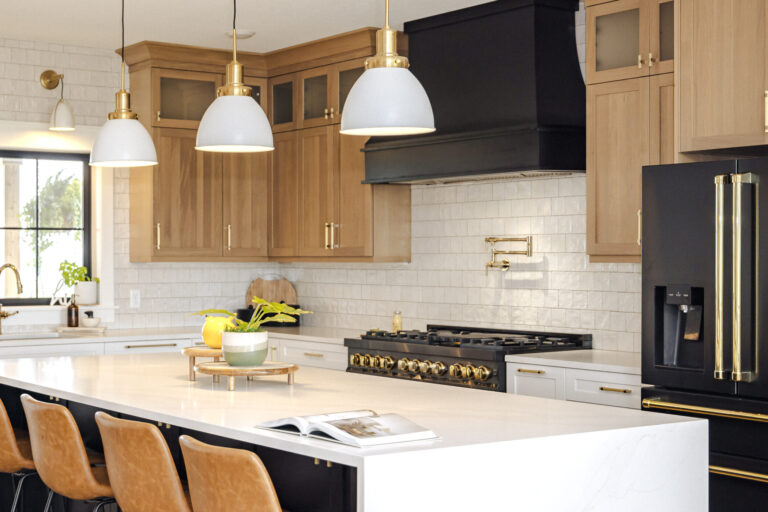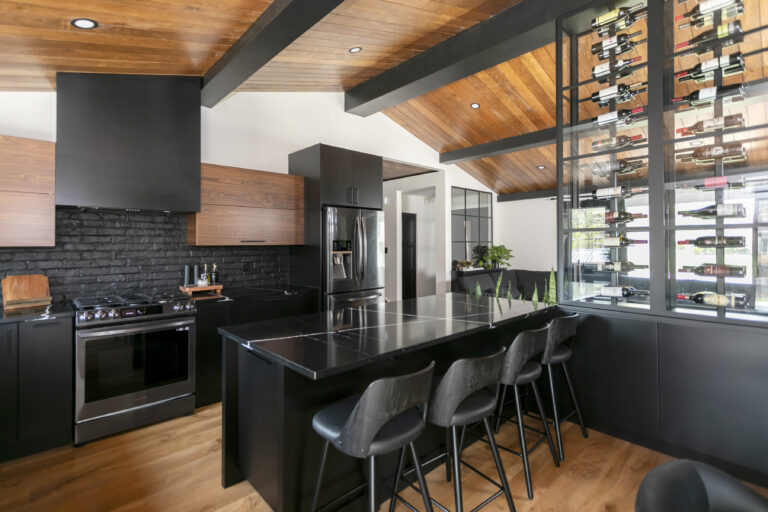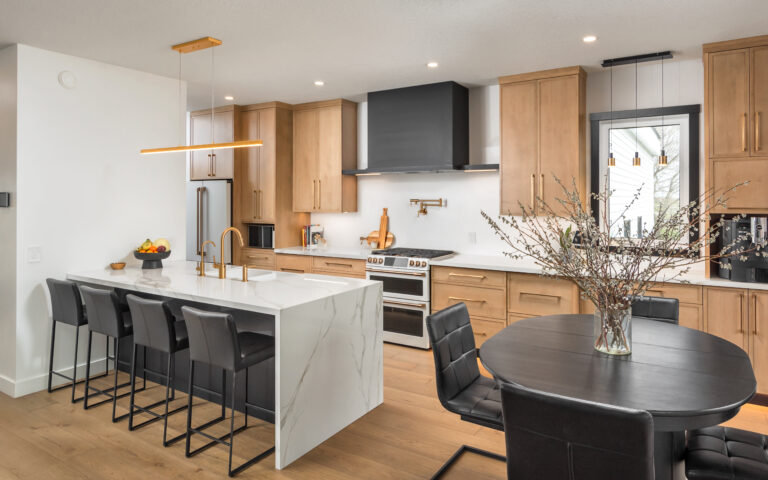American style kitchen cabinets have been a staple in homes for generations. With their framed construction and familiar door styles, they offer a sense of comfort and tradition. But are they the right fit for how you want your kitchen to look—and work—today?
Let’s walk through what makes this style unique, how it compares to frameless (European-style) cabinetry, and which one might be the better match for your space.
What makes American Style Kitchen Cabinets?
The biggest feature? A face frame.
American style kitchen cabinets are built using a framed construction method. That means a solid wood frame is attached to the front of the cabinet box. Doors are mounted to that frame—either sitting inside it (inset), partially over it (standard overlay), or covering it completely (full overlay).
That frame adds structure and gives the cabinet a more layered, traditional look. It’s a style that’s been used in North American homes for decades—and it’s still widely available across most cabinet lines.
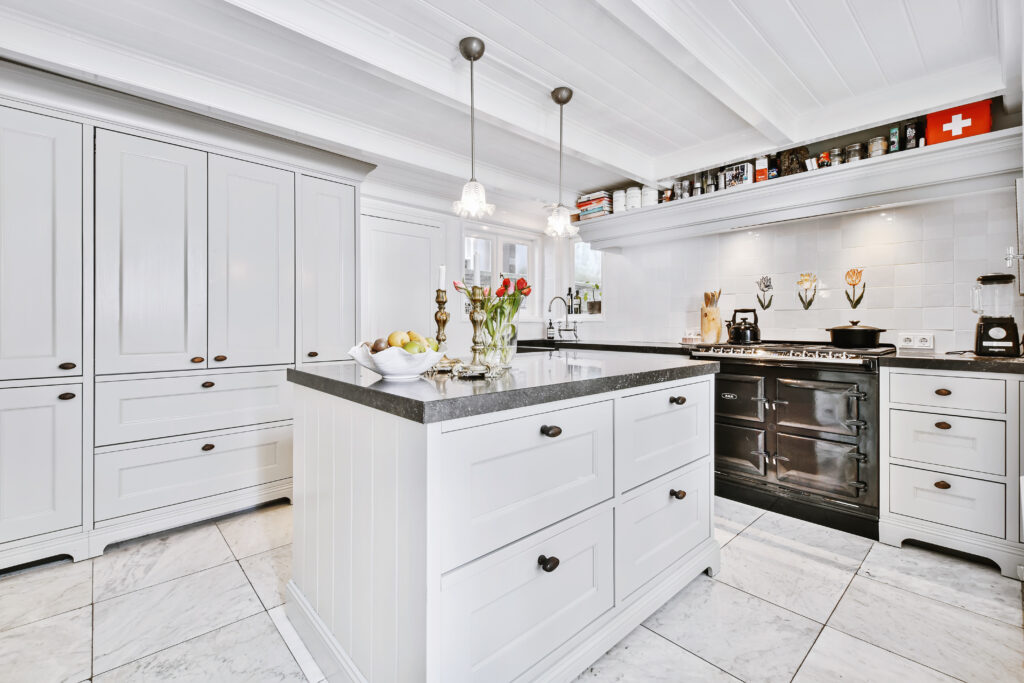
Common Features of American Style Kitchen Cabinets
These cabinets tend to include:
Shaker, raised-panel, or arched doors
Visible spacing between doors and drawers
Decorative details like crown moulding or corbels
Painted or stained finishes, especially in wood tones or classic whites
You’ll often see American-style cabinets in traditional, farmhouse, or transitional kitchens. They suit a wide range of homes, especially if you’re aiming for a cozy, layered space.
What’s Different About American Style Kitchen Cabinets vs Frameless Cabinets?
What’s the difference between framed (american style kitchen cabinets) and frameless cabinets? Frameless (or European-style) cabinetry skips the face frame altogether. Doors mount directly to the cabinet box, which creates a clean, uninterrupted front.
Here’s how it compares:
| Feature | American Style Cabinets | Frameless (European) Cabinets |
|---|---|---|
| Construction | Framed | Frameless |
| Appearance | Traditional or transitional | Modern and minimal |
| Door Spacing | Gaps between doors | Tight, seamless spacing |
| Interior Access | Slightly limited by frame | More open access |
| Style Compatibility | Cozy, classic, or rustic | Sleek, modern, or transitional |
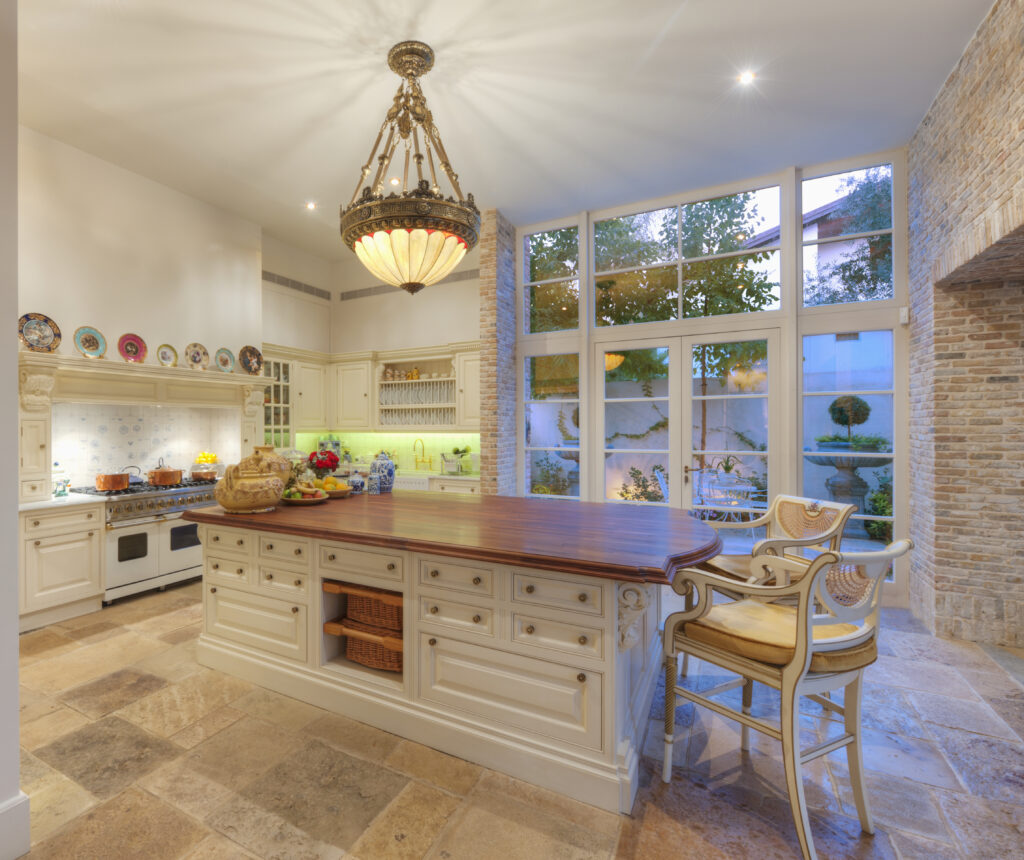
This traditional American style kitchen has framed cabinets.
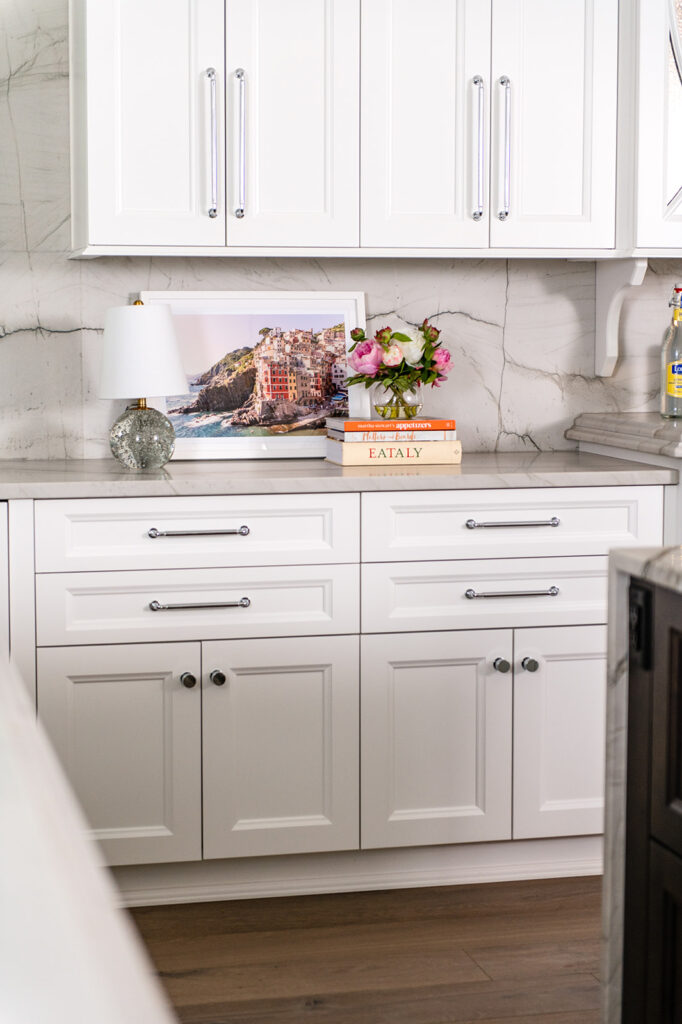
These Decor Cabinets have no face frame (frameless).
Which One Fits Your Kitchen?
Ask yourself a few questions:
Do you want your kitchen to feel traditional and warm, or open and modern?
Do you love detailed cabinet fronts, or do you prefer flat, smooth surfaces?
Are you trying to maximize every inch of cabinet storage?
Does your home’s style lean more classic or contemporary?
American style kitchen cabinets might be right for you if:
You’re renovating an older home and want to stay consistent with the architecture
You prefer decorative details and trim
You love the look of painted wood or classic door styles
You’re drawn to a timeless, comfortable kitchen feel
Frameless cabinets might be a better fit if:
You prefer a minimal look with clean lines
You’re building new or going for a more modern update
You want more usable interior space
You’re looking for finishes that are easy to clean and low-maintenance
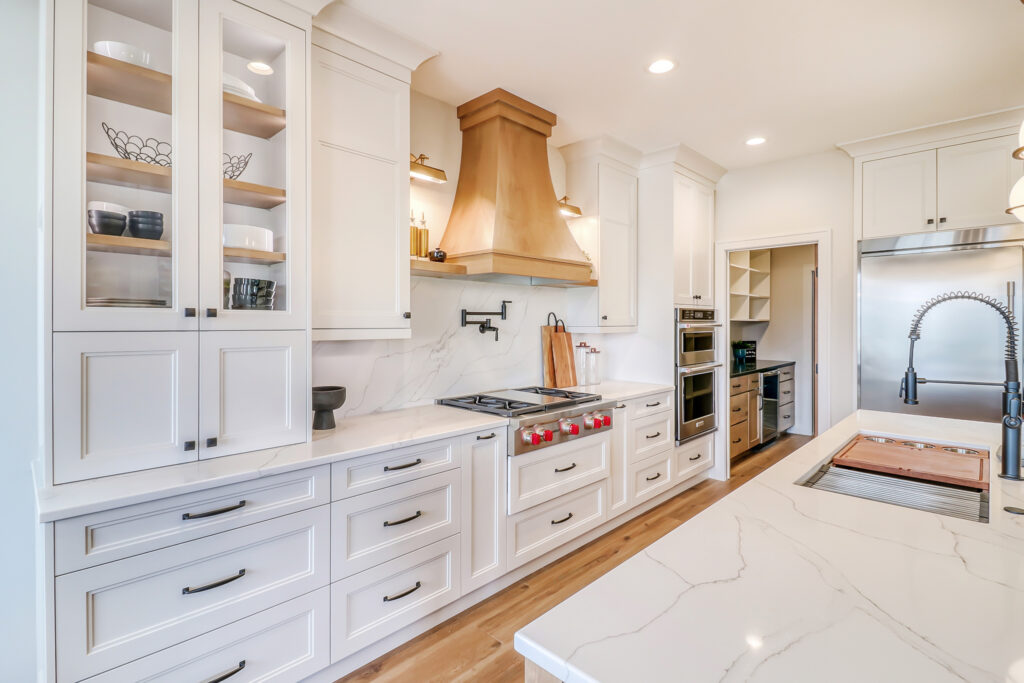
These Decor Cabinets have no face frame (frameless).
Does One Work Better Than the Other?
Do frameless or framed cabinets work better? Both styles have strengths—it depends on what you value most.
American style cabinets offer familiarity and charm, and they’re often available through a wide range of suppliers.
At Decor, we offer frameless cabinetry. It’s designed for everyday life with durable materials, soft-close technology, and clean finishes—but without losing warmth or personality.
You don’t need to sacrifice function to get a kitchen that looks the way you want.
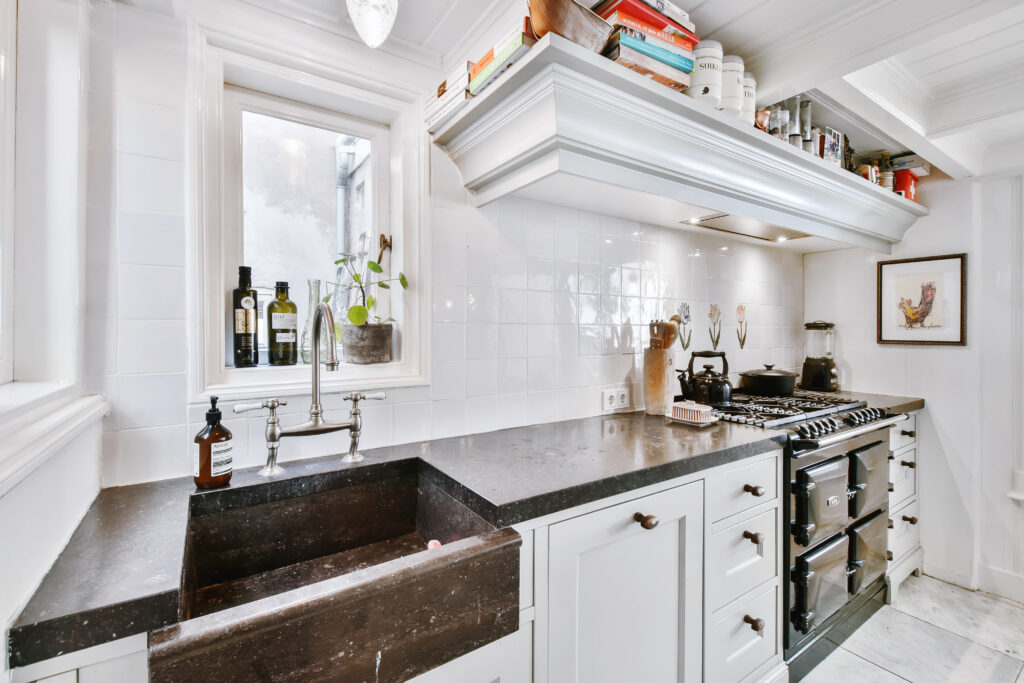
American style kitchen cabinets with a face frame.
So—Are American Style Kitchen Cabinets Right for You?
They could be. Especially if you love traditional style and a sense of homey comfort, American style cabinets might be for you.
But if you’re ready for something built with modern living in mind, frameless cabinetry might be a better match.
Both styles can be beautiful, functional, and timeless—it’s about what works best for your layout, your taste, and your day-to-day life.


